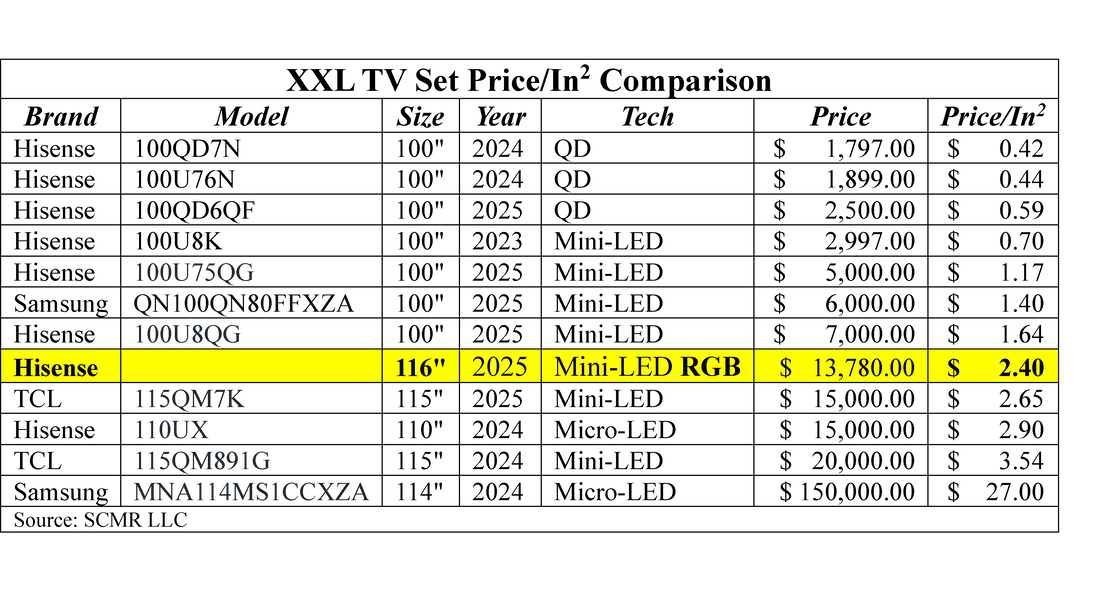XXL
While RGB backlight technology has the potential to enhance the quality of LCD based TV sets, once again extending the life of LCD as a display technology, there are two questions that must be answered when evaluating whether RGB backlight technology will be a gamechanger, or whether it will be just a marketing gimmick to bring shoppers over to the premium TV set section on the retail floor.
The first is whether enough TV set buyers will be able to discern enough of a difference between Tv sets using RGB backlights and those using more standard white or blue backlights. Unfortunately much of the feedback on RGB backlight systems comes from those at shows where such displays are being shown, and most of those viewers are there because they either work in the CE industry or report on it. This leads to a more biased view of new display technologies and one that is a bit removed from that of the average consumer, so the true test will come when such sets are on the floor at Best Buy (BBY) or WalMart (WMT).
We took a quick look at the XXL TV set segment (only sets 100” or larger) to see how the Hisense RGB set pricing compared to other generic XXL Mini-LED sets and here is what we found:
Of course, we take into consideration that RGB backlight technology will have a higher cost both in the fact that each backlight ‘pixel’ is comprised of three (RGB) LEDs instead of one, and the driving circuitry for each pixel is now far more complex and costly to produce. That said, either Hisense has found ways to keep costs low, even during early production, or they are willing to forgo product profitability in order to maintain a share lead over rivals (TCL in China) and in South Korea and Japan. Sony, Samsung, and LG will now have to find another feature to add to their initial RGB backlight Mini-LED sets when they are released, in order to garner a price premium over Hisense, likely something they were not planning for until recently.



 RSS Feed
RSS Feed